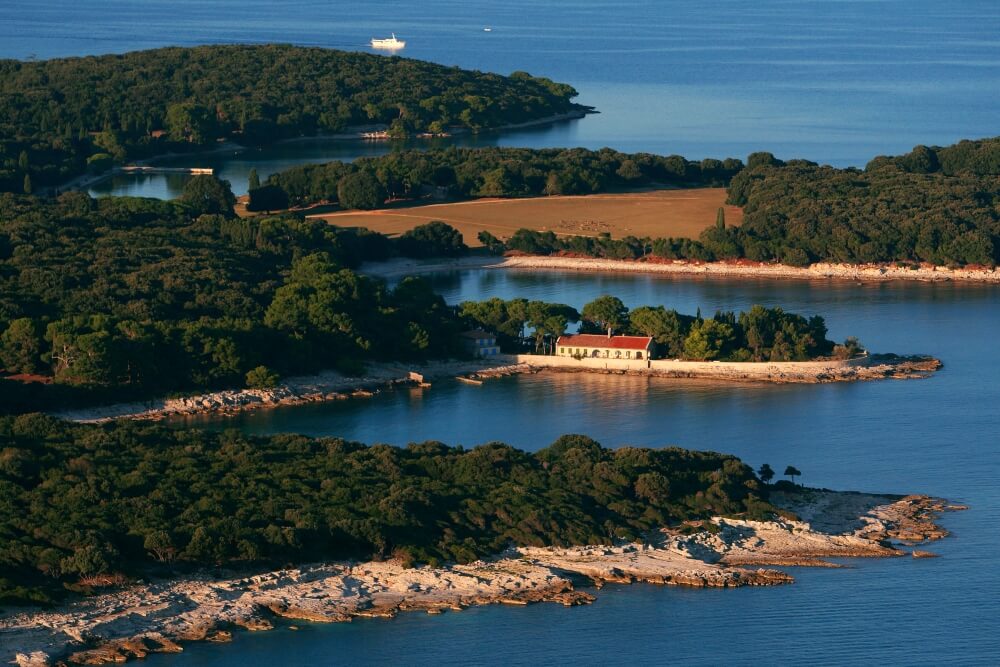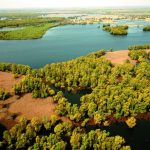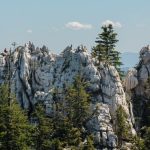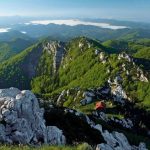With a wealth of activities, things to see and do, Brijuni National Park has one of the broadest offers of any national park in Croatia.
- Welcome to Brijuni National Park Croatia!
- The Brijuni Islands
- Brijuni Islands day trip: best things to do
- Fažana to Brijuni islands
- Accommodation: Brijuni hotels, Camping
- Where to eat?
- Things you (maybe) didn’t know about Brijuni National Park
- Where is Brijuni National Park?
- Weather on Brijuni
- How to get to Brijuni National Park
- More information
Welcome to Brijuni National Park Croatia!
Most of Croatia’s National Parks pride themselves on offering wild nature and natural, unblemished surroundings. Certainly, that isn’t true of Brijuni National Park. Because, although wild creatures roam the grasslands here, perch on tree branches and hide in protected waters, this is not a landscape untouched by human hand. In fact, this is a National Park sculpted specifically to entertain. Subsequently, its offer is wide and intriguing, an end product millions of years in the making.
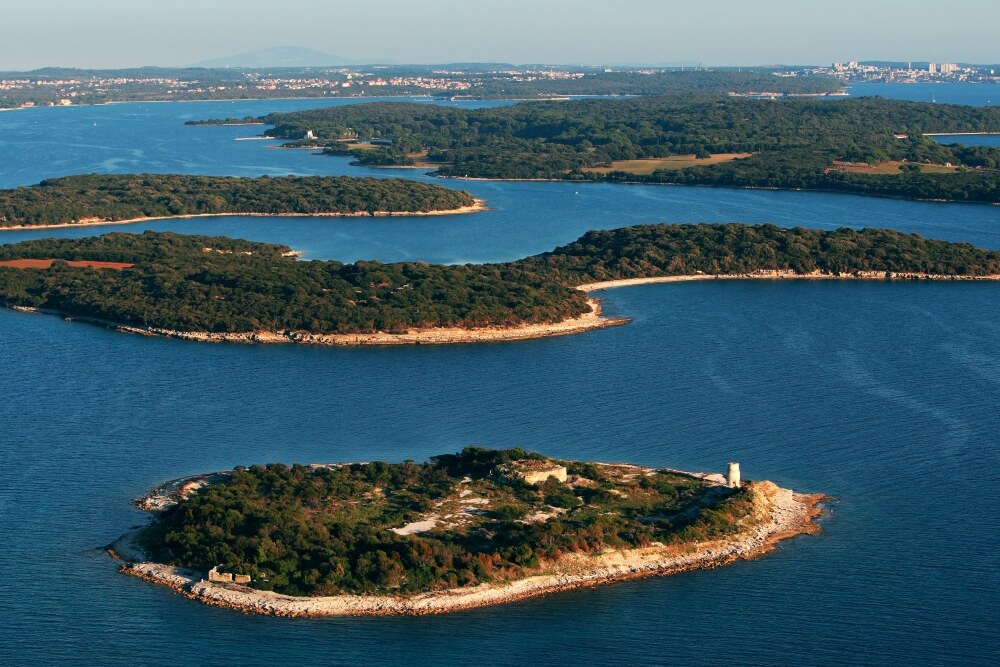
Dinosaur footprints sit near Roman ruins. Byzantine settlements neighbour Venetian fortifications. Glorious Austro-Hungarian architecture gives clues of prestigious former guests. Each are within a stone’s throw of the most crystal clear of seas.
Among its more modern additions, hotels, a safari park, museums, a Mediterranean garden and a wealth of activities. Namely, cycling, diving, golf, kayaking and tennis. Indeed, there are few National Parks in Croatia with such a wide and luxurious offer. Let’s take a closer look…
The Brijuni islands
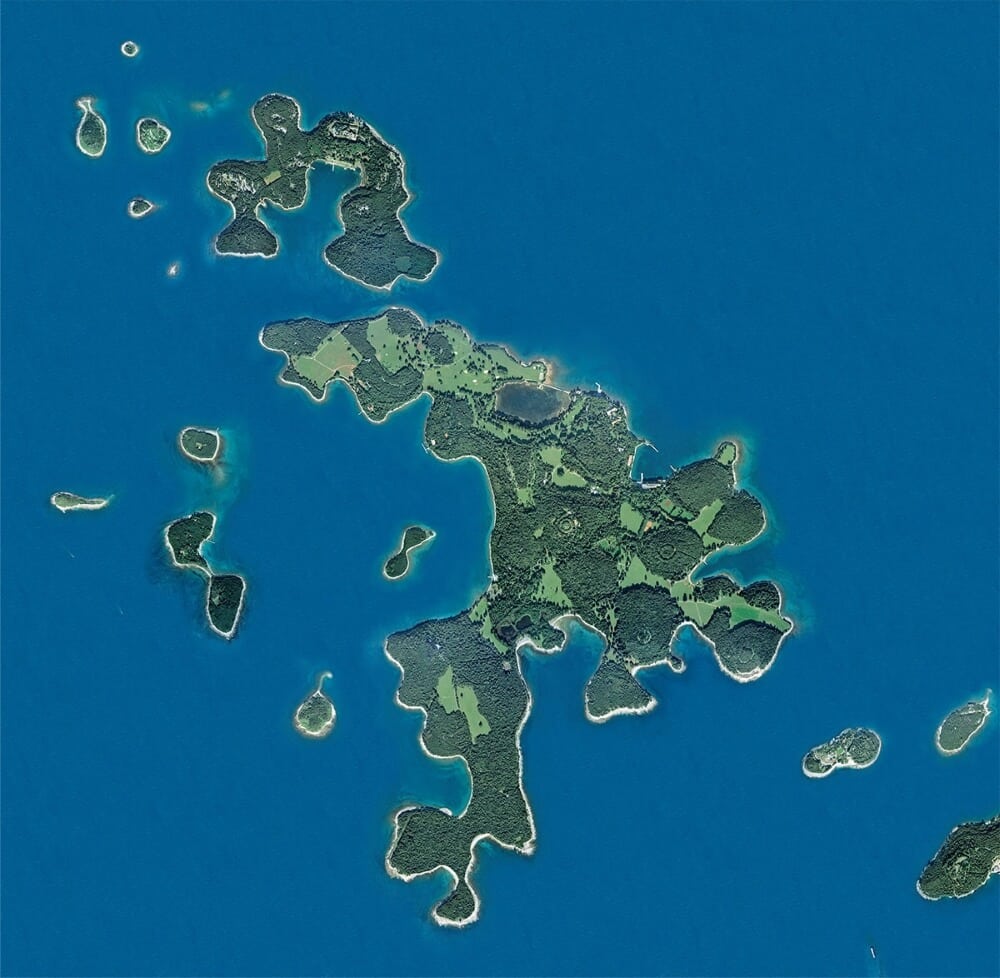
14 islands and islets make up the Brijuni islands. In detail, here are how the key ones look.
1) Veli Brijun (Veliki Brijun)
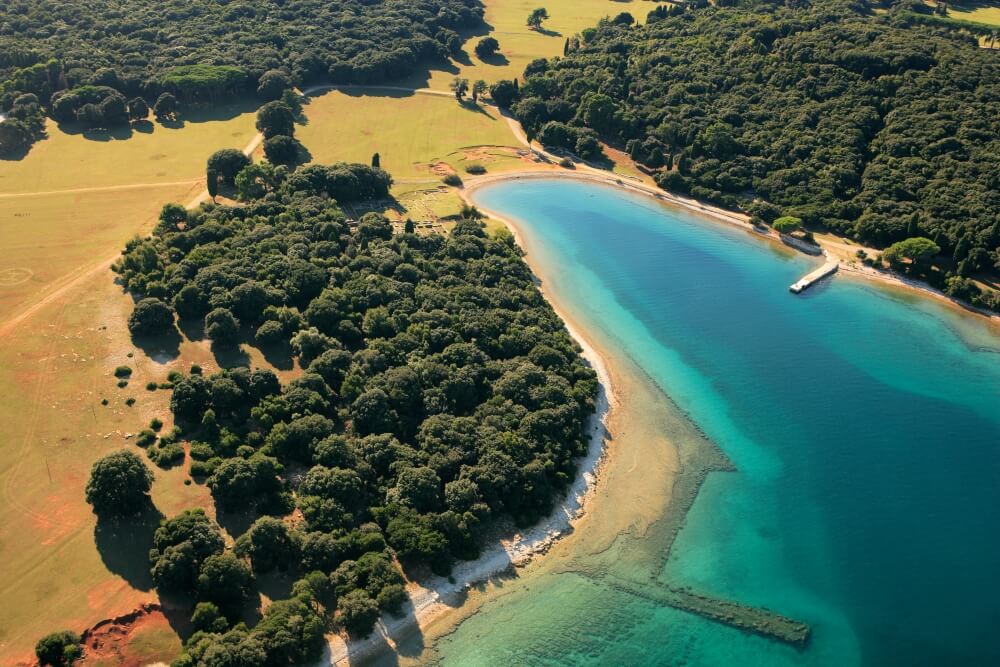
Largest and most popularly visited, on Veliki Brijun you find beautiful parkland, archaelogical heritage, free-roaming animals and a luxury resort. Furthermore, there’s a golf course, bird sanctuary, botanical gardens, safari park, three museums and dinosaur footprints.
2) Mali Brijun
Famed for its large Fort Minor as well as the open-air, summertime Ulysses Theater, Mali Brijun is the second-largest island of Brijuni.
3) Vanga (or Krasnica)
You can see Vanga has two main sections, each with buildings, connected by a thin strip of land.
4) Kozada (or Kotež)
You’ll find Kozada just off the coast of Štinjan, the island nearest to the shore. Subsequently, small boats freely arrive at this uninhabited spot all summer, carrying swimmers seeking seclusion.
5) St. Jerolim (Sveti Jerolim)
Also near the mainland, Jerolim is a favourite day-trip and beach for Pula residents and visitors.
6) Other islands
You’ll find a further nine islands make up Brijuni. Namely, Galija, Gaz, Grunj, Obljak, Pusti, Sveti Marko, Supin, Vrsar and Supinić. However, most of these are quite small and closed to the public. Subsequently, you’ll enjoy them best on a boat tour or via overhead photography.
Brijuni islands day trip: best things to do
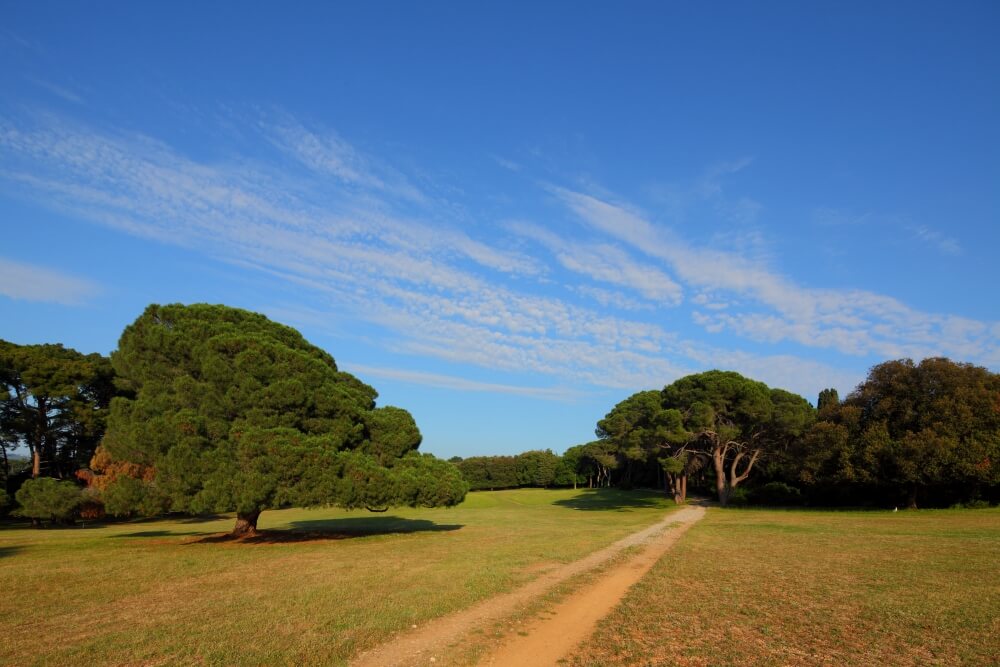
1) Veliki Brijun island tour
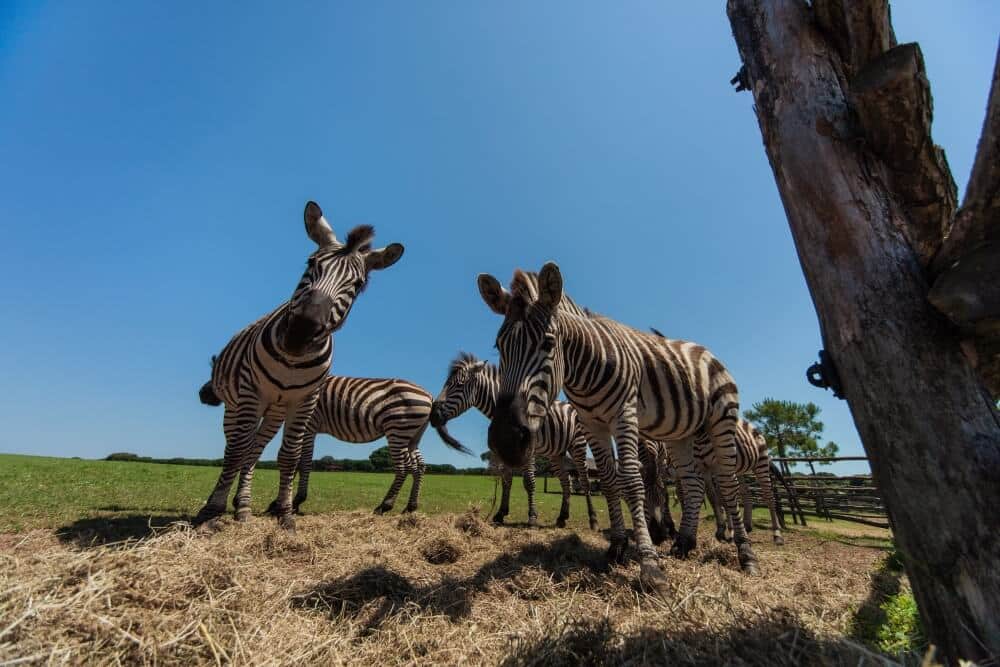
The most popular way to visit Brijuni National Park in a single-day trip is to take the official tour. In a four-hour trip, you’ll travel by boat from Fažana to Veliki Brijuni. Thereafter, you’ll get a guided tour on a little train and see most of the island’s main sights. Specifically, the Safari Park, Museum, Mediterranean Garden and the Old Olive Tree.
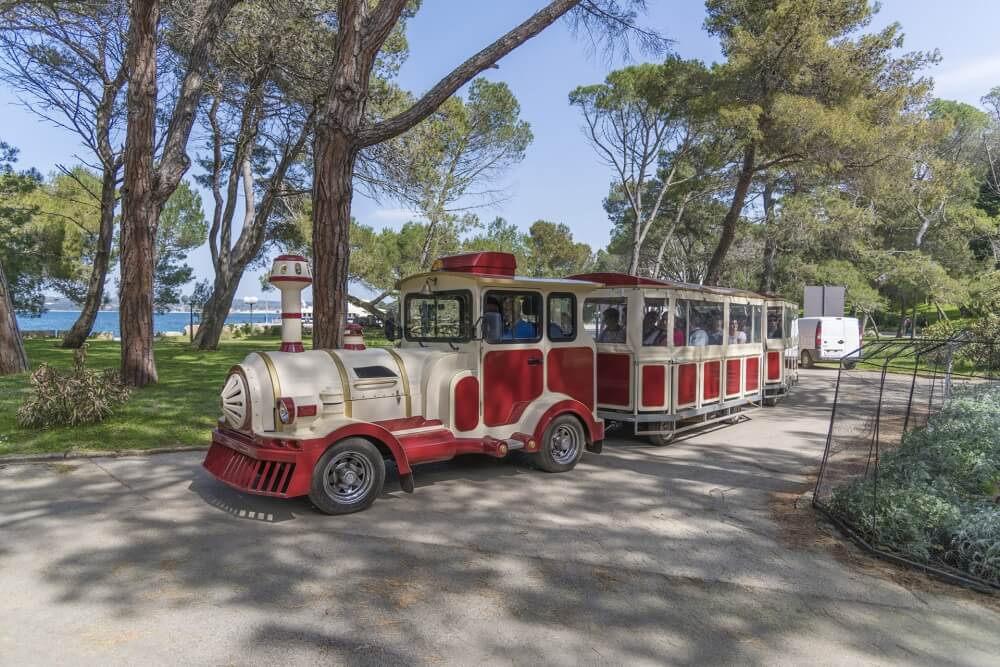
2) Brijuni islands beaches
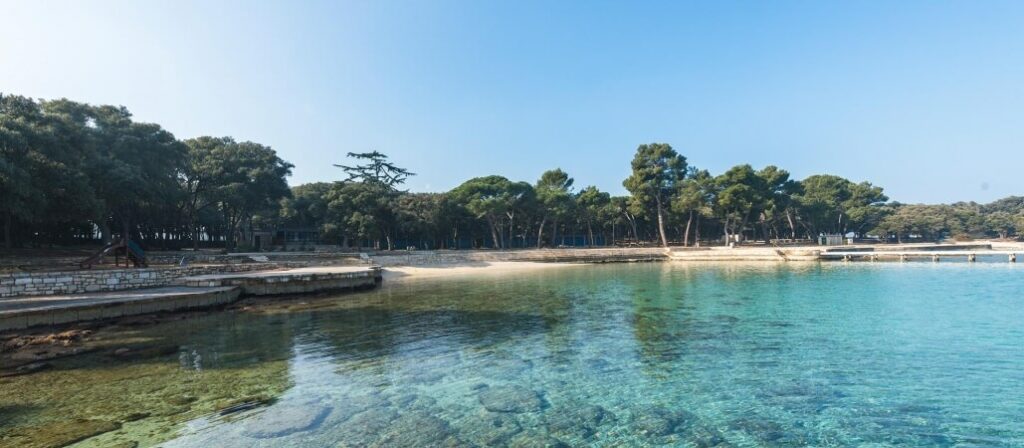
Certainly, the most popular and best-known spot for swimming and sunbathing is Saluga beach. In fact, these days, this is the only official place where swimming is sanctioned on the main island. Not only is Saluga fully appointed, but also it’s serviced by food and drink facilities. Previously, you could visit more remote options. Specifically, Rankun Bay, just past Villa Dubravka and Berta. However, because of the park’s duty to protect its natural assets, swimming is now discouraged in these places. Although, in Verige Bay, snorkeling is allowed. But, only if you go with an authorized park guide. At Verige Bay, you’ll find Roman remains both by the shore and underwater…
3) Snorkeling and diving
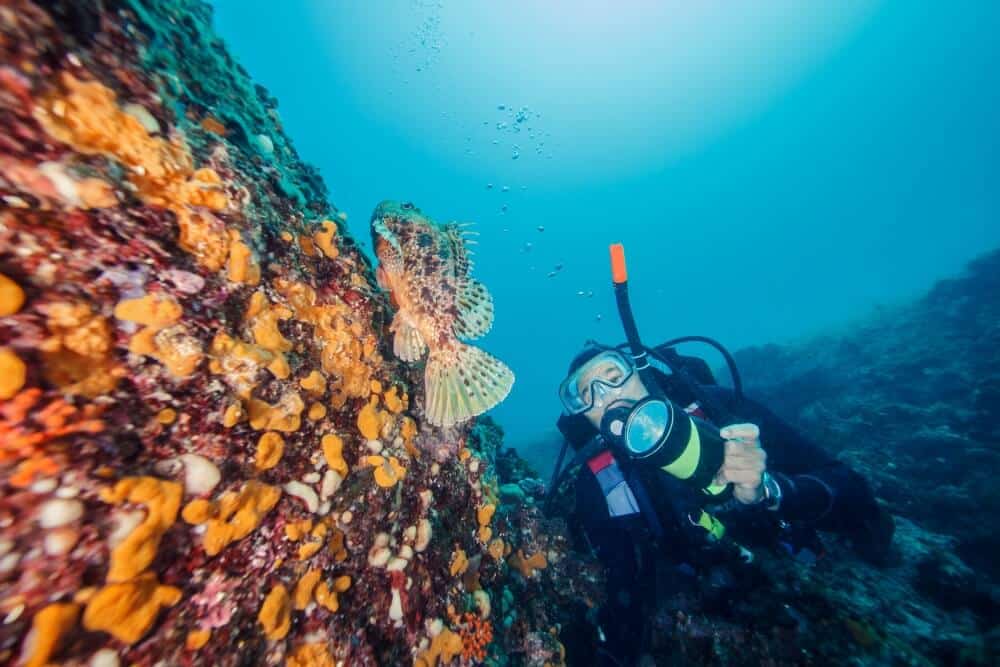
In total, Brijuni National Park has a surface area of 3,395 hectares. However, a huge 2,652 hectares of that is protected seas. Subsequently, the seas are teeming with colourful life and it’s a great place for snorkelling and diving.
Snorkeling
On the eastern side of Veli Brijuni, you’ll find remains of a sunken Roman villa in Verige Bay. Today, fish and other sea creatures are the only one living here. Lying at a shallow depth, even children can drop down and look. In the summertime, an authorized park guide can take you on a tour of the bay and show you where to look.
Diving
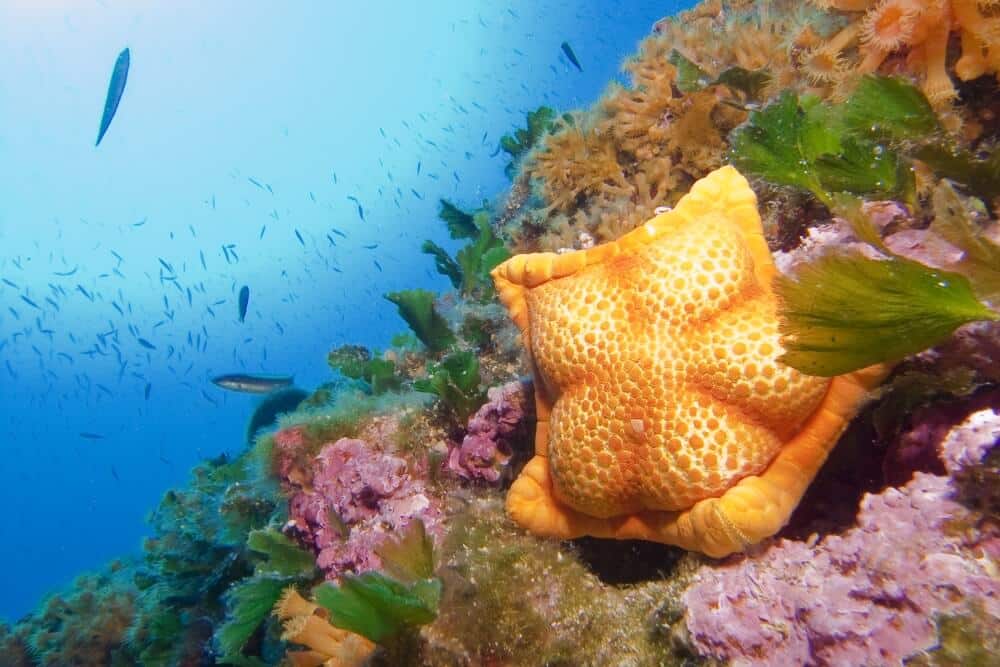
If you’re a scuba fan, qualified divers can explore three locations in Brijuni National Park. Namely, Sveti Jerolim, Peneda and Grunj. Protected from pollution and over fishing, within these waters you’ll see huge schools of fish. Also, if you’re lucky, you’ll catch sight of octopuses, colourful starfish, corals and sponges. You can go diving on Brijuni between May and October.
If you want to learn more about snorkeling and diving on Brijuni, then look here.
4) Ocean drive: Brijuni Golf Course
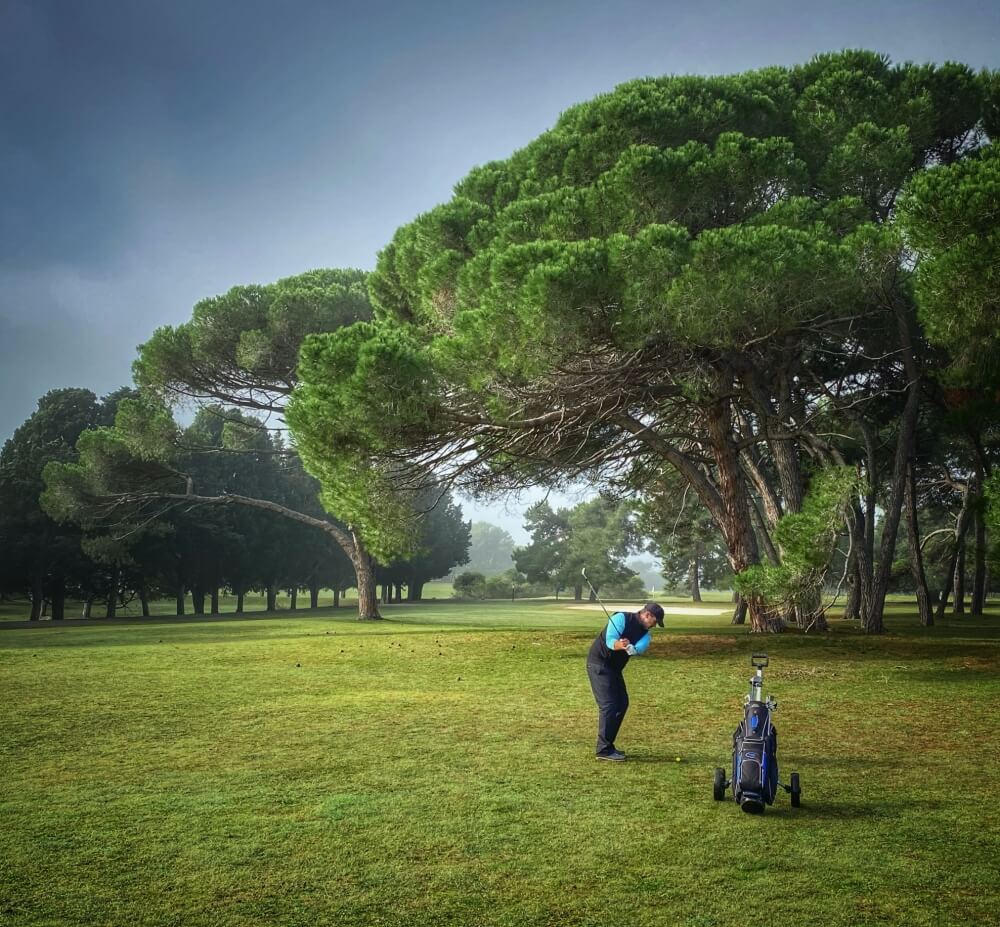
A blissful, 5531-meter long. 18 hole golf course, you can make a day of it if you want to golf on Brijuni. But, taking your time is perhaps a better idea. You’ll better enjoy golfing on Brijuni at a relaxed pace, as part of a weekend stay or longer. Not only does the course wind its way through Veliki Brijuni’s northerly trees, but also sea views accompany most of the way.
5) Kayaking
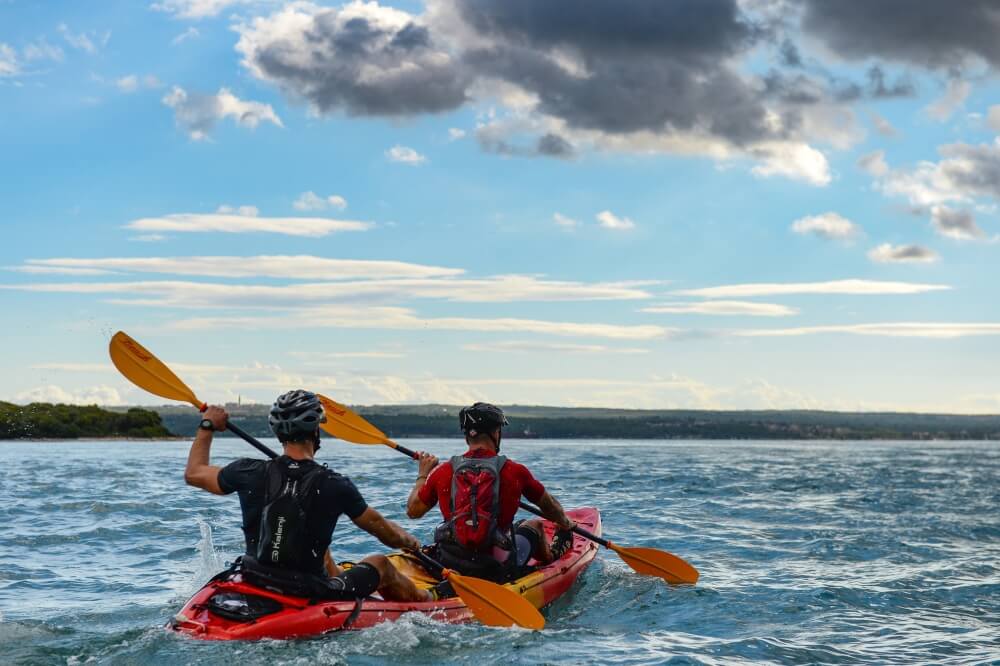
As part of a small group, you’ll be guided from Veli Brijun past Kozada island to Jerolim island. On Jerolim, you’ll sightsee, swim and take a drink. Afterwards, you return via Verige Bay, learning about Brijuni’s cultural and historical heritage along the way.
Available from beginning June to the end of October, you must book kayaking tours in advance: sport-org@np-brijuni.hr / +385 99 808 1945. The tour lasts between two and a half and three hours.
Fažana to Brijuni islands
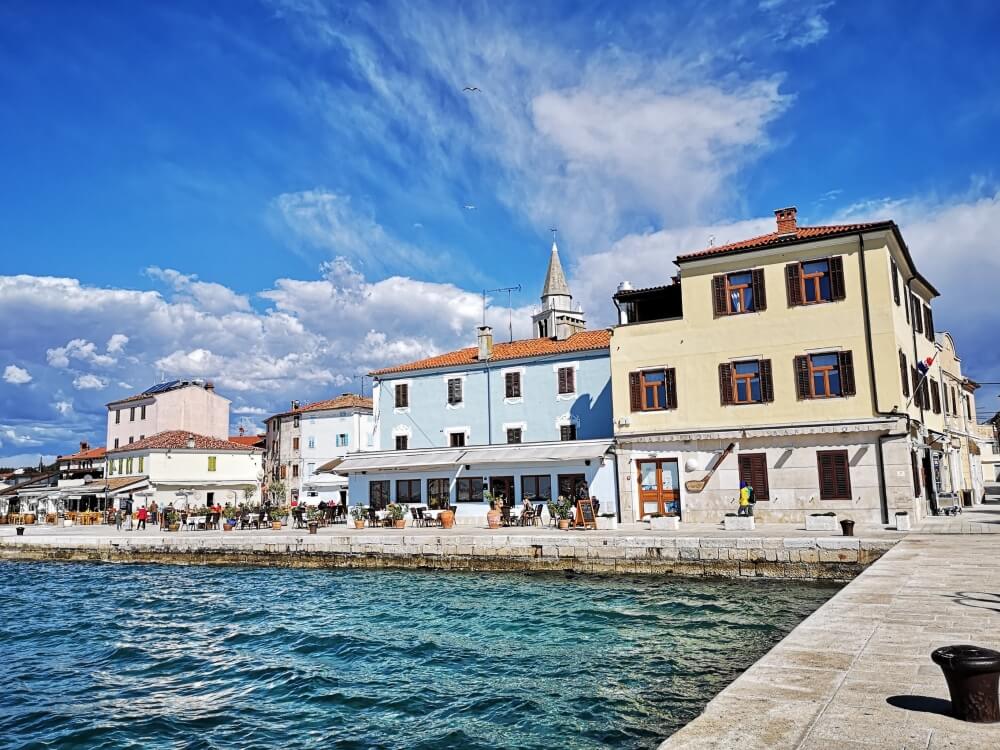
If you want to visit Brijuni National Park, the best way is to take the official park boat from Fažana. Buy a ticket from the office on the quayside. It includes return boat transfer to Brijuni, entry ticket and a guided tour on a little train to see most of the island’s main sights. Specifically, the Safari Park, Museum, Mediterranean Garden and the Old Olive Tree.
Also, you can rent an electric car or bicycle and explore the park on your own, with the help and navigation of the Brijuni Pocket Guide mobile app.
However, this is not the only way to visit and experience Brijuni National Park. In fact, you’ll find organised boat trips from Pula to Brijuni and from Rovinj to Brijuni. In particular, days trips from Pula cover a wide range of activities, depending on the time of year and what you want to do.
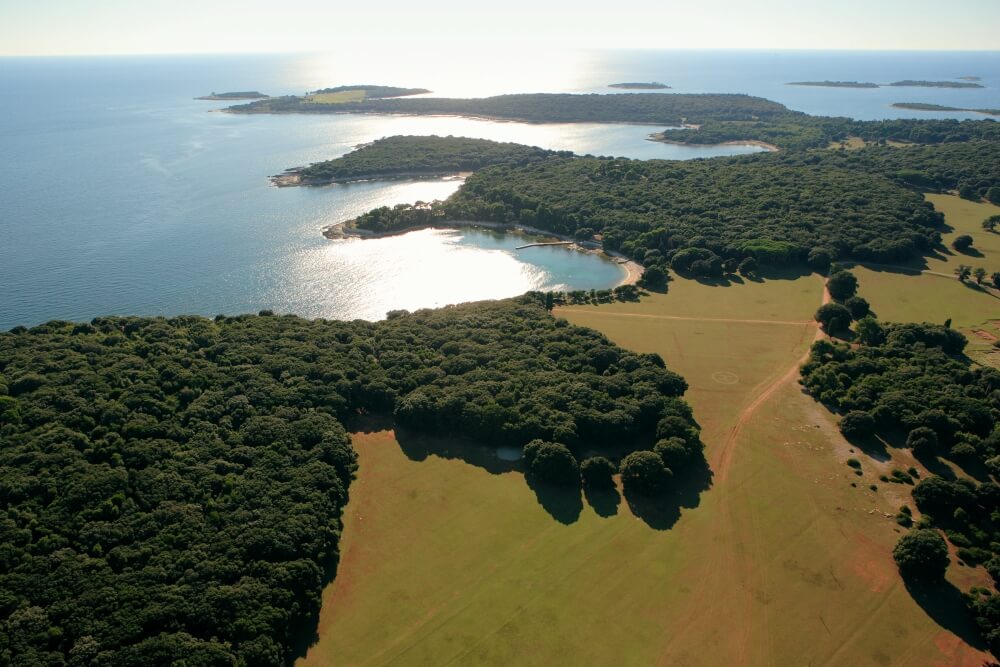
Accommodation: Brijuni hotels, Camping
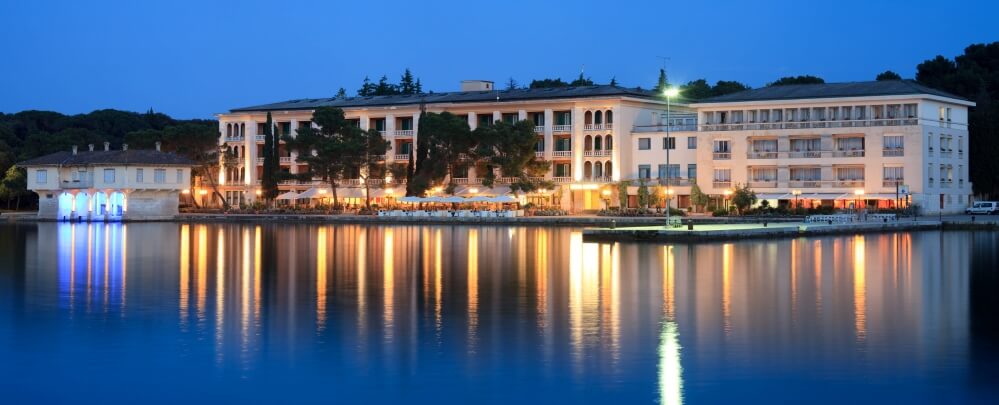
Brijuni hotels
Istra hotel
Spacious rooms and terraces with views of either the sea or the park. If you want to see prices and booking details, then look here. Or, go on a virtual tour – inside and out – below.
Neptun hotel
Fully modern and yet still with a distinct flavour of the Austro-Hungary of yesteryear. Look out across the park at breakfast. Or, if you have a sea view, you can take in Veliki Brijun port, the Fažana Channel and the mainland. If you want to see prices and availability, then check here.
Villas and rooms
Previously called Hotel Karmen, Rooms Karmen has 54 accommodation units on three floors. 24 are single rooms with a balcony. 30 are double rooms (18 with a balcony). If you want to see inside, then look here.
Situated on the southeastern part of the island, in Lovorika Bay, Villa Lovorka accommodates 6 across its two buildings. You can also take advantage of their catering offer. If you want to check out the villa and surroundings, then look here.
Brijuni Camping
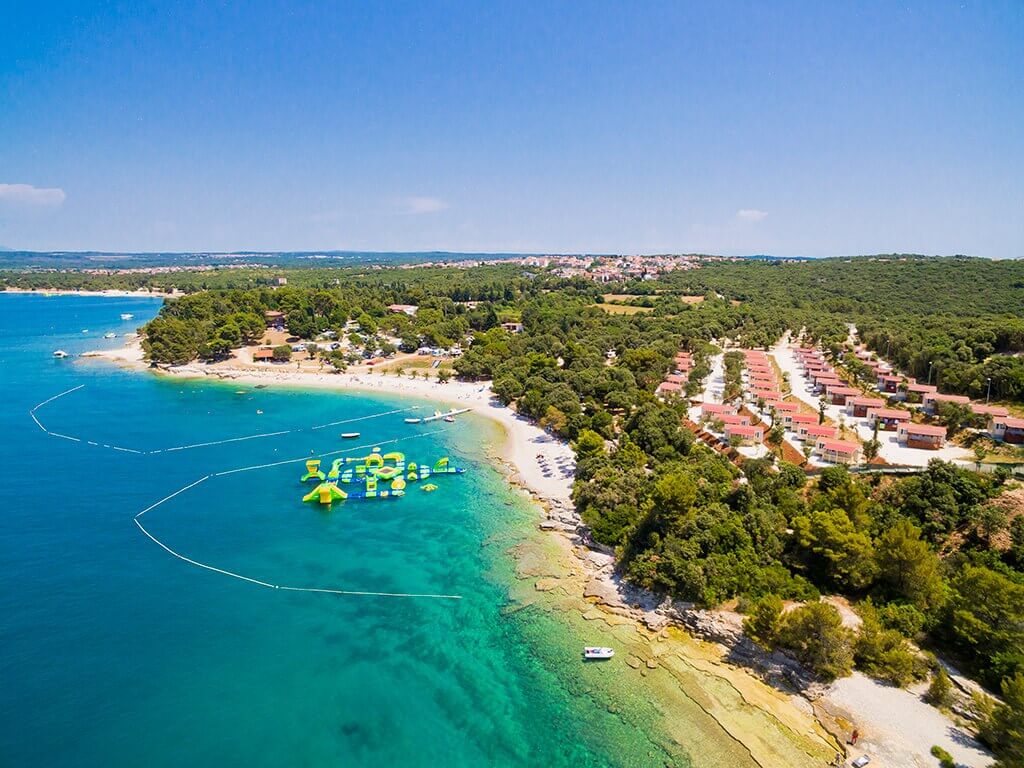
At the present time, there are no facilities for camping within Brijuni National park itself. However, you will find some campsites very close by. Specifically, the nearest campsites to Brijuni are Pineta in north Fažana, Bivillage in Fažana and Brioni Sunny Camping in Štinjan, north Pula.
Where to eat
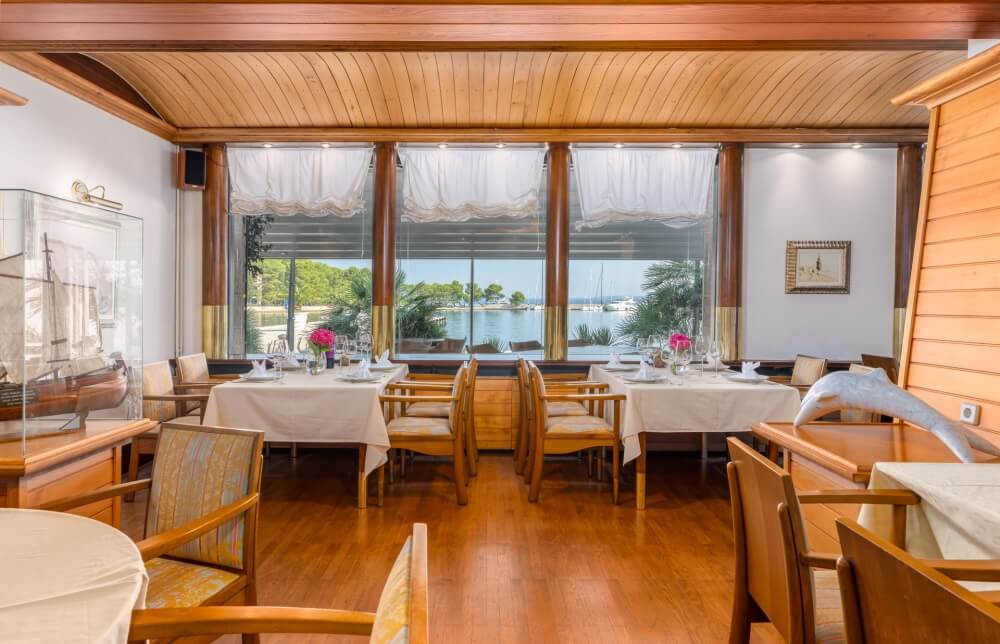
If you’re by the shore and want something informal, then try Saluga on the northeast of Veliki Brijuni. With a long and esteemed history, the more formal, 100 seat Restaurant Galija has a lot to live up to. Find it at the Neptun hotel complex. Also, the hotel has its own much larger Neptun restaurant, where guests come for meals, including breakfast. Additionally, the hotel has a cafe, good for coffee and cake. You find another cafe, Školjka, in the villa Magnolija, next to the archaeological sites. And there’s a beach bar, Sony & Lanka.
Things you (maybe) didn’t know about Brijuni National Park
Who lives here? Animals of Brijuni National Park
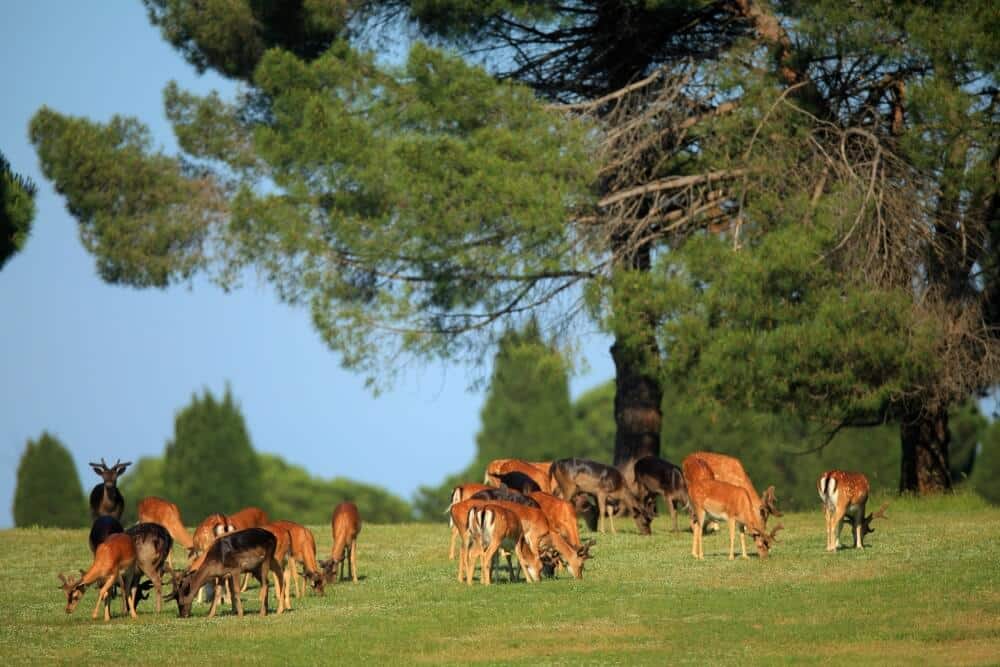
Previously, Brijuni was more famous for its imported species, gifts from abroad sent to live in the safari park. But, these days, you’ll get as much of a thrill from seeing animals freely roaming here. Hares dart across the grassland, peacocks strut and mouflon are bold enough to approach the beach bar. Perhaps most impressive of all, herds of deer wandering within eyesight of hotel balconies.
Around the lakes of the bird reservation, you might see a range of residents or temporary guests. Namely, cormorants, terns, quails, ducks, warblers, nightingales, herons, great white egrets and black storks.
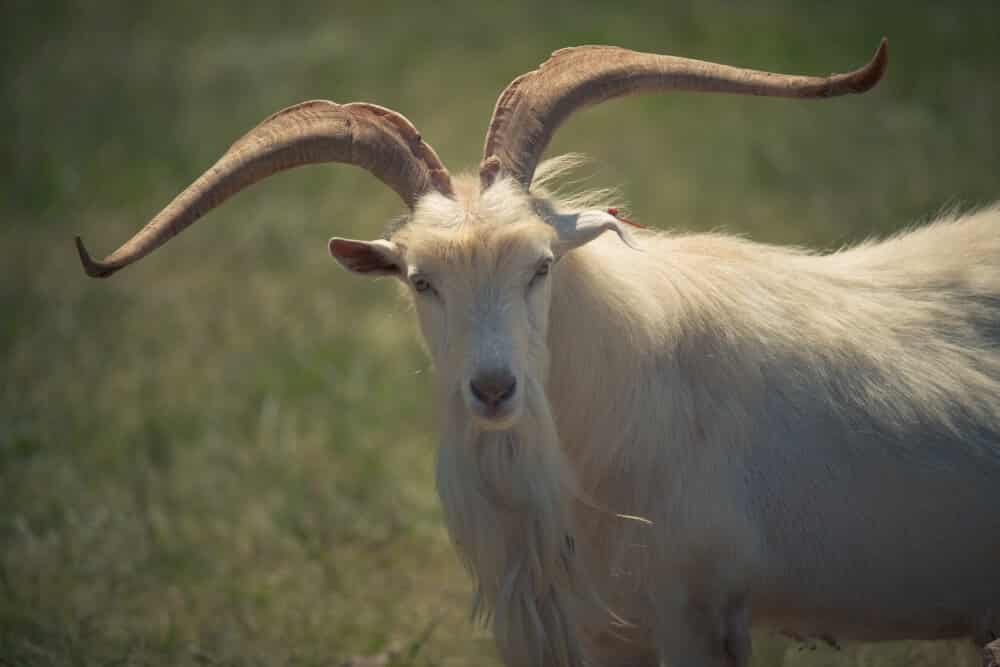
Who used to live here? Dinosaurs
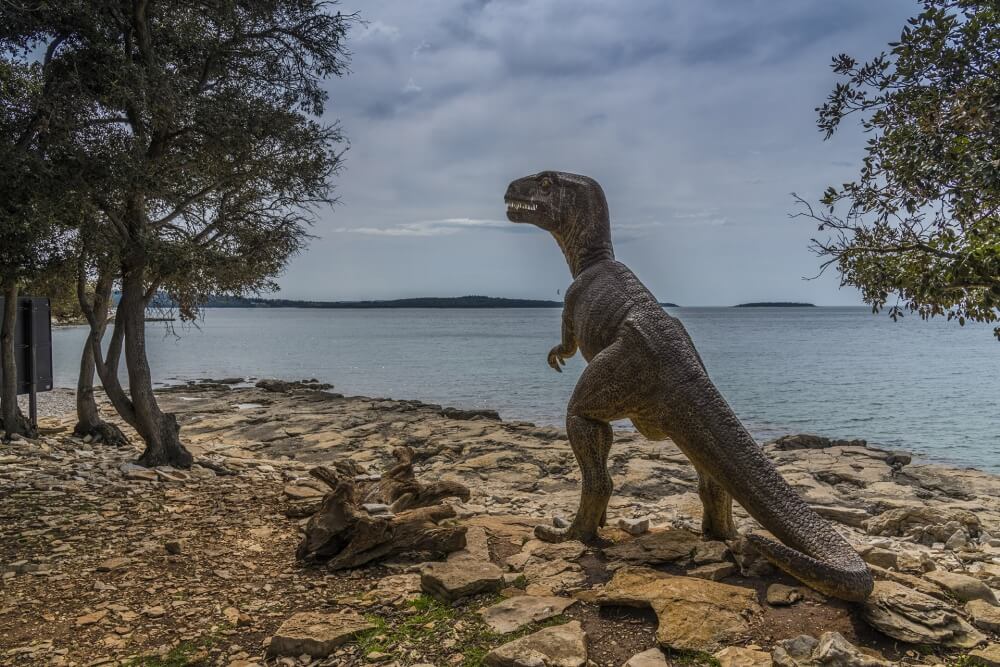
More than 200 dinosaur footprints have been discovered at four sites on Veliki Brijun. Namely, at Cape Pogledalo, Ploče, Kamik/Plješivac and Trstike/Debela Glava. Of course, millions of years ago, they didn’t swim across from Fažana for a short break. As recently as ten thousand years ago, the Brijuni islands were attached to the mainland.
Heritage: Bronze age, Byzantine and the Romans
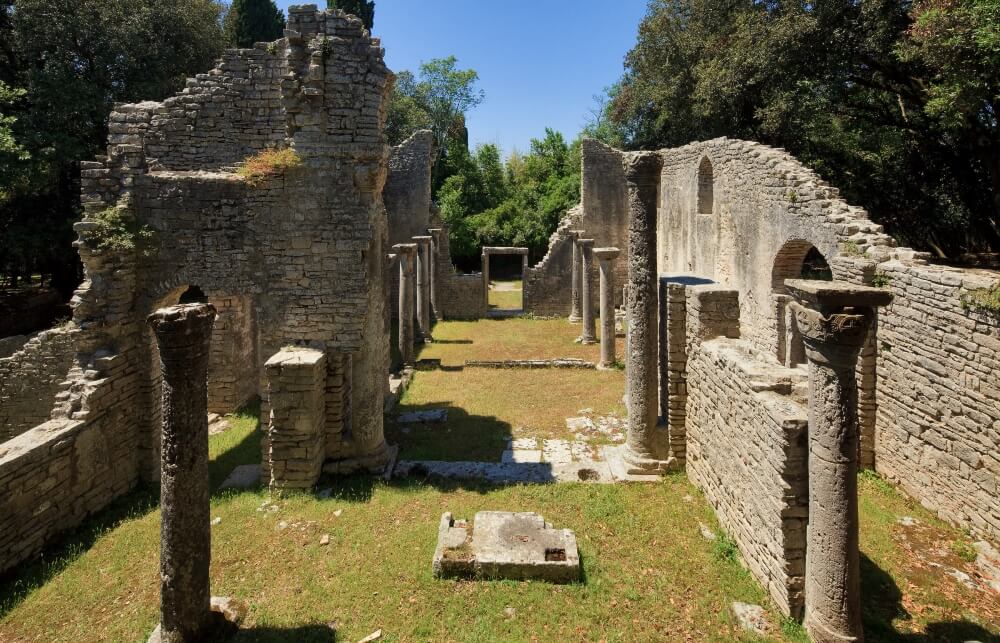
Evidence of human habitation on Brijuni dates back to 3,000 BC. After 177 BC, the Romans built villas and a settlement here. In fact, the last of their olive trees – planted around AD 400 – are still growing. At the bay of Verige, you’ll find remains of a three-floored Roman villa, temple, baths and harbour. Other archaeological includes the 5th-century St. Mary’s Basilica and the nearby Byzantine settlement.
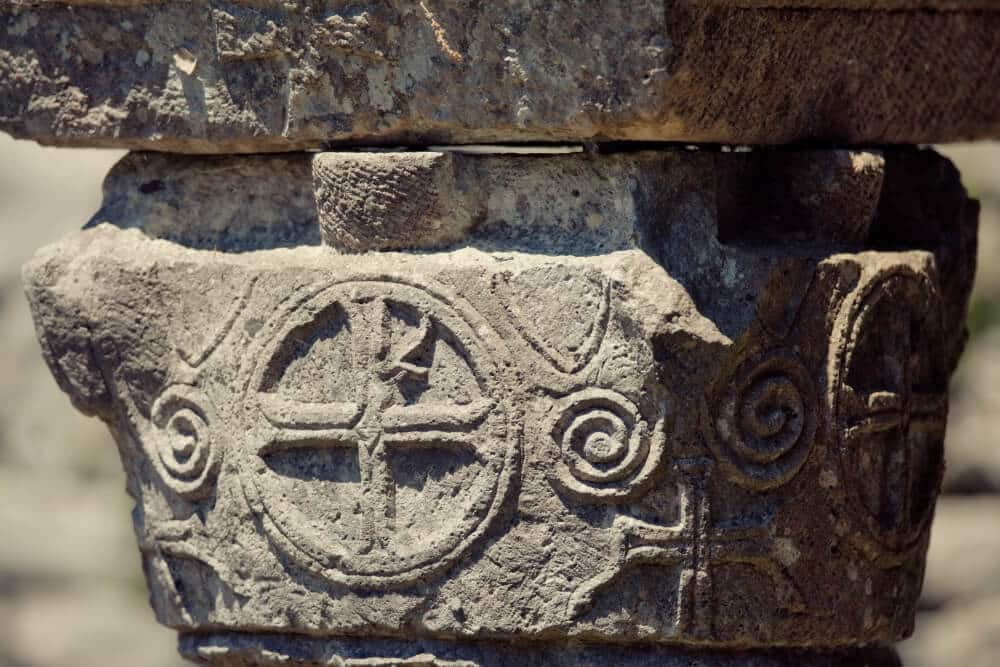
A Nobel Prize was awarded to the discovery of malaria’s transmission on Brijuni
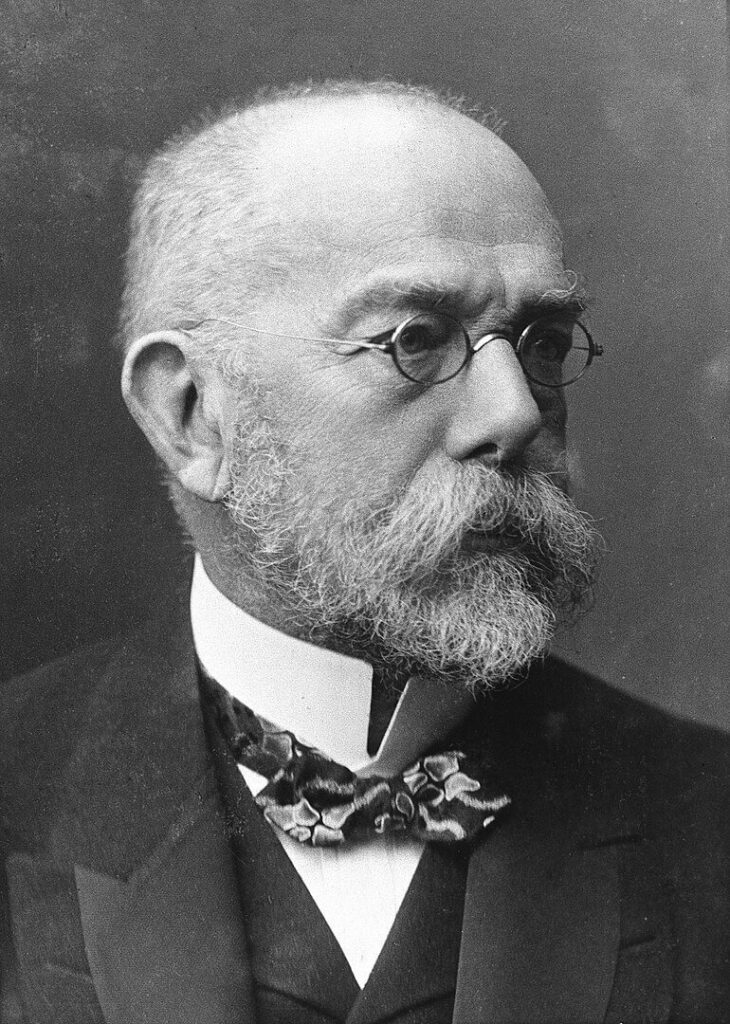
As the discoverer of the causes of tuberculosis, cholera, and anthrax, Robert Koch is regarded as one of the main founders of modern bacteriology. But, on Brijuni the German microbiologist learned arguably his most far-reaching lesson. Namely, it was here that he discovered that malaria was transmitted specifically by mosquitos.
You’re walking the same pathways as former heads of state and celebrities
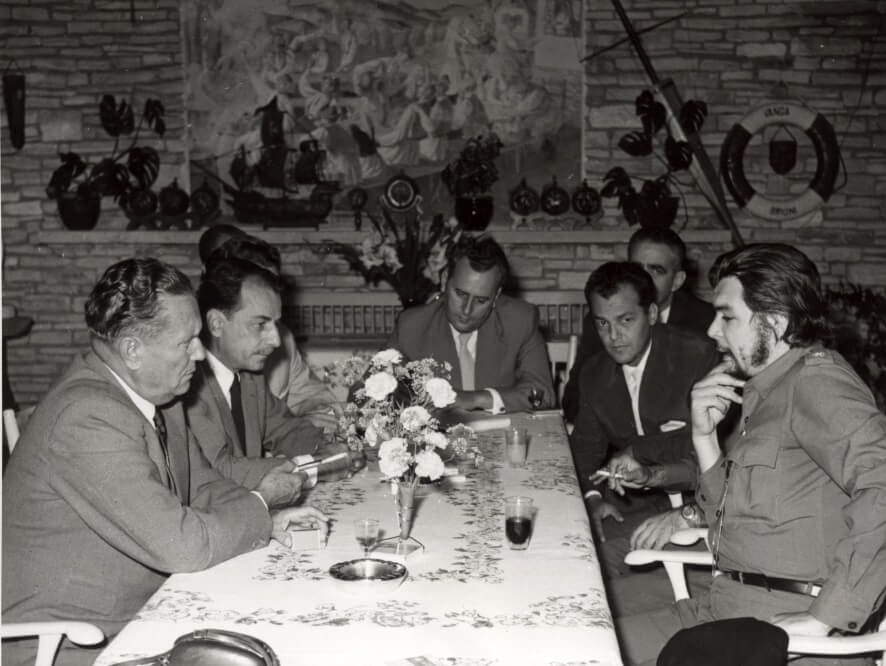
Previously, many world leaders visited Brijuni, guests of former Yugoslav premier Tito. Namely, Queen Elizabeth II and Che Guevara all came here. In fact, Tito established the Non-Aligned Movement with India and Egypt’s leaders here in 1956.
In the region to visit the famous film festival of Pula, cinema elite Sophia Loren, Richard Burton, Liz Taylor and Gina Lollobrigida were also guests on Brijuni.
Where is Brijuni National Park?
Brijuni National Park is located on the island Veliki Brijun within the Brijuni islands. The island sits off the coast of the Istra region, immediately opposite the town of Fažana, near Pula. Istra is a peninsula located in the northwest of Croatia, and you’ll find Brijuni National Park located off its southwestern tip. It is a coastal city. In detail, its GPS coordinates with respect to latitude and longitude are 44.9110° N, 13.7722° E.
Brijuni islands map
Weather on Brijuni islands
Weather in Brijuni is mild and pleasant throughout the year. In detail, the summers are long and warm, but rarely too hot or too dry. Also, the winters are never too cold. It’s classed as having a warm and temperate climate. Maybe you’re considering a game of golf on Brijuni out of season? May, September and October are excellent times to visit Brijuni. Both Brijuni National Park and golf on Brijuni are enjoyed at this time. Here’s the Brijuni weather today and the weather forecast for the next few days.
How to get to Brijuni National Park
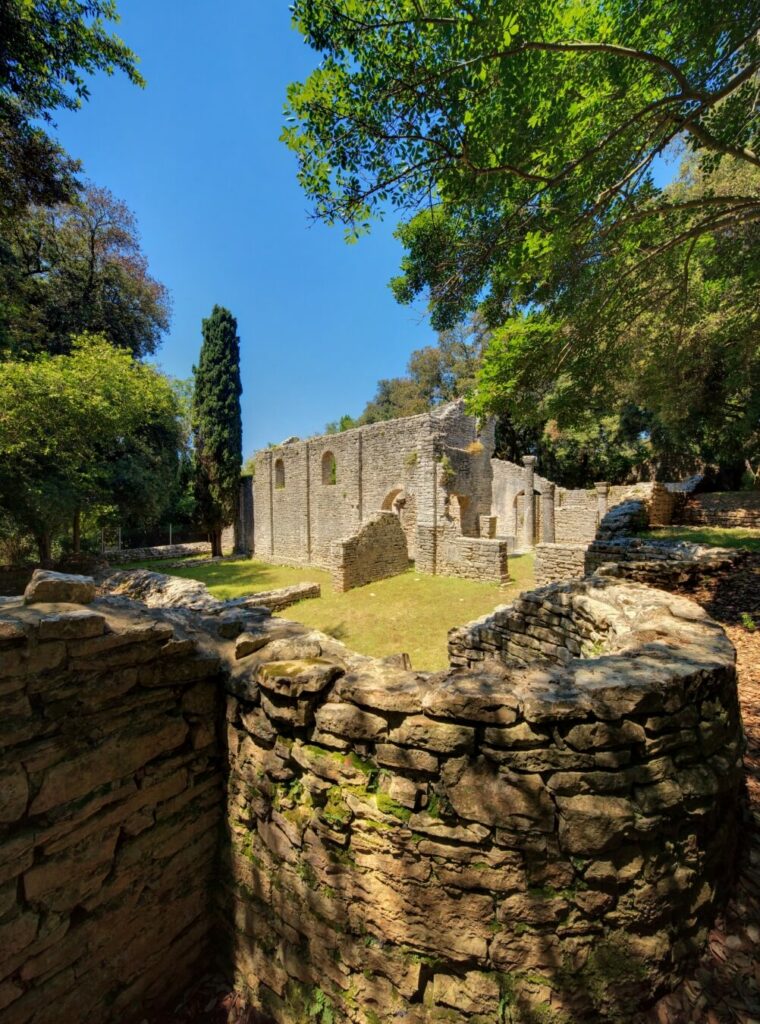
Boat from Fažana
To visit Brijuni by boat from Fažana, first, buy a ticket for Brijuni National Park. You’ll find the ticket office on the quayside. The ticket includes boat transfer between the mainland and Brijuni, entry to the National Park and a guided tour on a little train. On the trip, you’ll see most of the island’s main sights. Specifically, the Safari Park, Museum, Mediterranean Garden and the Old Olive Tree. Including the boat journeys, the trip to Brijuni takes about four hours. Alternatively, you can rent an electric car or bicycle and explore the park on your own, with the help and navigation of the Brijuni Pocket Guide mobile app.
Road, by car
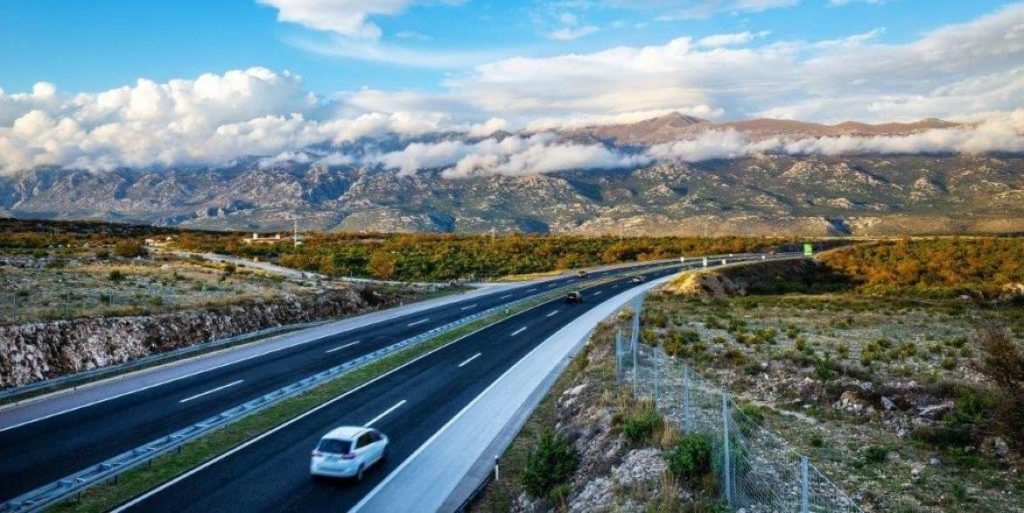
Obviously, you can’t drive to Brijuni. It’s not one of the Croatian islands where you can take your car. So, if you’re driving, head for Fažana.
From Rovinj, head east out of town towards Bale. Thereafter, join the D21 to Vodnjan. In Vodnjan, take a right just after you’ve bypassed the centre. You’ll see the road to Fažana clearly signposted.
From Pula, simply head north out of town following the signs for Štinjan and Fažana. Don’t take the first left turning into Štinjan. Instead, follow the signs for Šurida and Fažana.
Looking for a fast, reliable and trouble-free transfer to or from Brijuni? Contact TC transfer partner Adriatic Transfers for your one-stop solution.
Brijuni islands from Rovinj
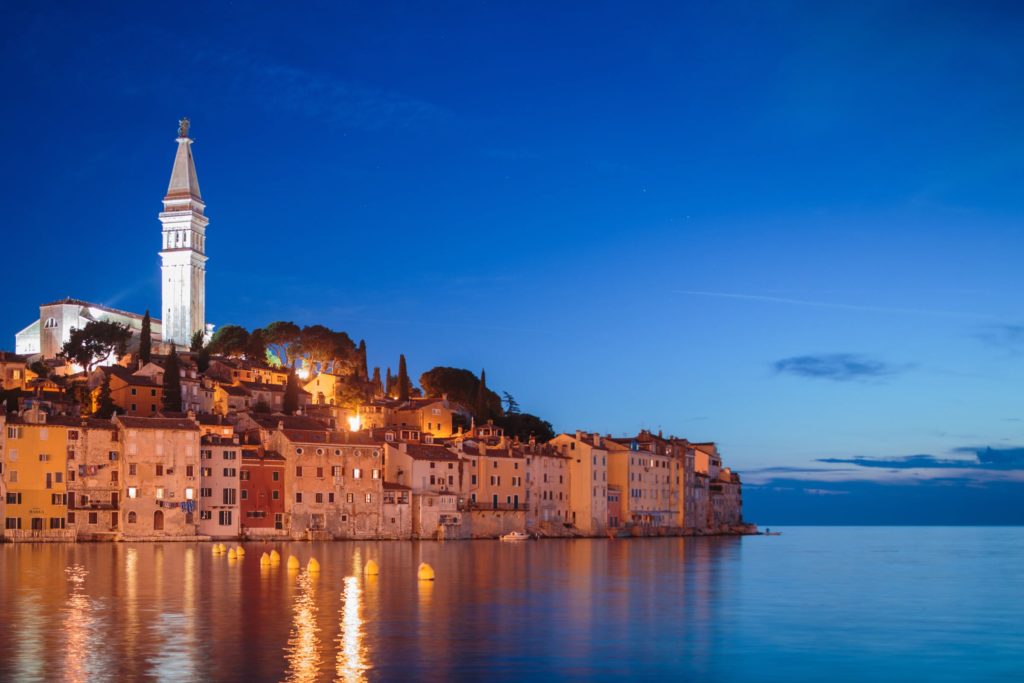
At a distance of less than 30km, Brijuni National Park is easy to reach from Rovinj. However, the journey by bus involves going via Pula. There is no public transport bus from Rovinj to Fažana. But, from Rovinj to Pula is only 40 minutes by bus and tickets cost around 5 Euros.
Although, you don’t need to travel via Pula or Fažana to get to the Brijuni islands from Rovinj. You can take a boat tour from the town to the Brijuni islands. What’s more, it’s a great way to travel! If you want to learn more about the boat trip from Rovinj to Brijuni, then check here.
Bus to Fažana and Brijuni from Pula
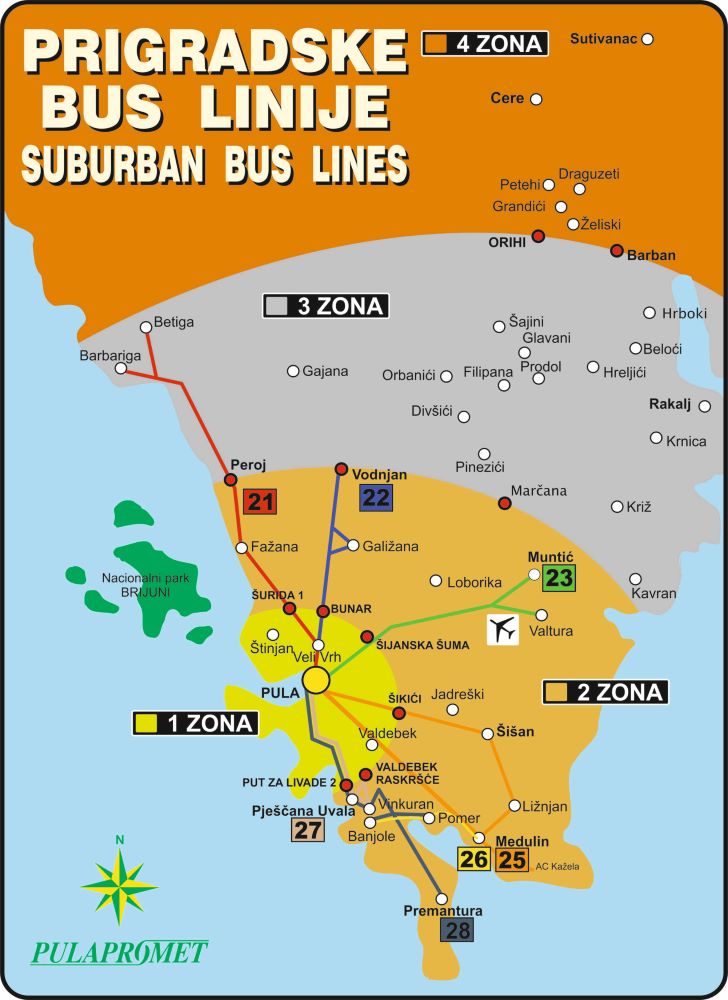
If you want to travel to the Brijuni islands from Pula by bus, then take the number 21. Catch the 21 to Fažana from the main bus station in Pula. From mid-morning until late afternoon, there’s at least one bus an hour. The journey from Pula to Fažana by bus takes only 25 minutes. If you want to check the summer timetable, then look here.
Flights, nearest airport
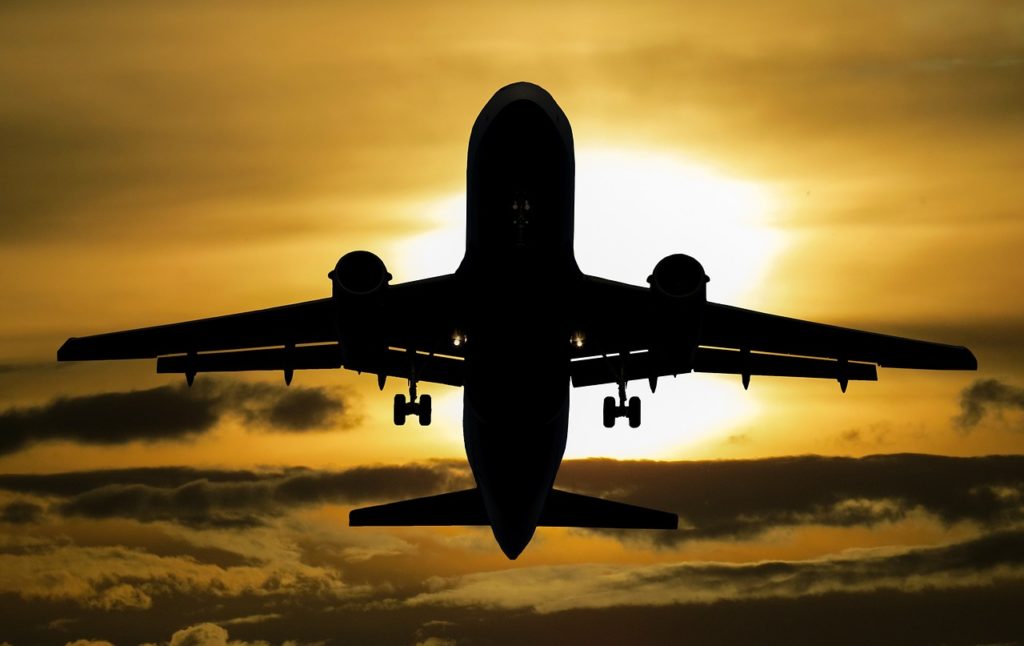
The nearest airport to Brijuni is Pula Airport (PUY). You’ll find many international carriers flying to Pula, particularly in summer. From the rest of Croatia, you can travel from Zagreb to Pula by plane. Also, from Osijek and Split too. Flights to Pula from Dubrovnik require a change of planes in either Split or Zagreb. You can read all about Pula airport in our dedicated page.
Airport transfer to Fažana: Airport transfer routes include direct travel between Pula airport and Fažana.
Getting around Brijuni
If you’re going to stay on Brijuni a little longer, then there are some great ways to get around. On Veliki Brijuni, you can rent a bicycle or a small electric car. Not only are these options environmentally friendly, but also they will open up the island’s entire landscape and interior.
More information about Brijuni National Park
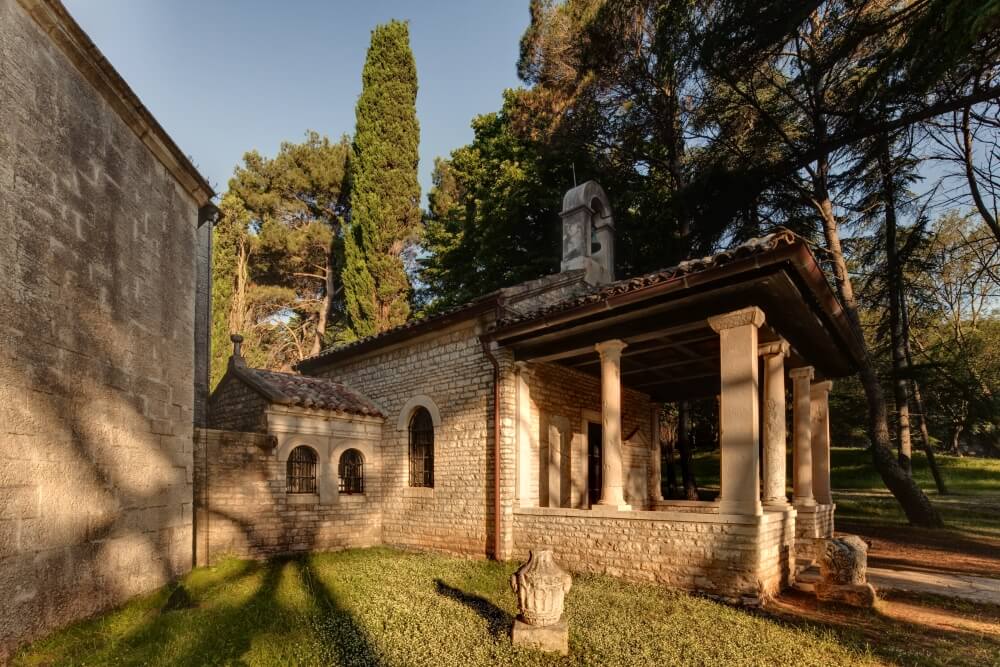
Tickets / Book a day trip to Brijuni National Park
Telephone
+385 52 525 881
+385 52 525 882
Ticket office in Fažana
+385 52 525 883
+385 52 525 884
izleti@np-brijuni.hr
Brijuni Hotel booking
Telephone:
+385 52 525 807
+385 52 525 536
Email: prodaja@np-brijuni.hr
Brijuni Hotel reception: +385 52 525 861
State institution: Brijuni National Park
Park address: Brijuni, 52100 Pula, Croatia.
Postal address: Brionska 10, 52212 Fažana, Croatia.
Website: www.np-brijuni.hr/en
Email: https://www.np-brijuni.hr/en
Facebook: facebook.com/npbrijuni
Instagram: instagram.com/npbrijuni/
Fažana Tourist Board (Turistička zajednica Općine Fažana)
Address: 43. Istarske divizije 8, 52212 Fažana, Croatia
Telephone: +385 52 383 727
Email: info@infofazana.hr
Website: www.infofazana.hr/en/
Facebook: facebook.com/visitFazana/
If you want to follow the latest news for Brijuni National Park and the Brijuni islands, then check out Total Croatia News.

